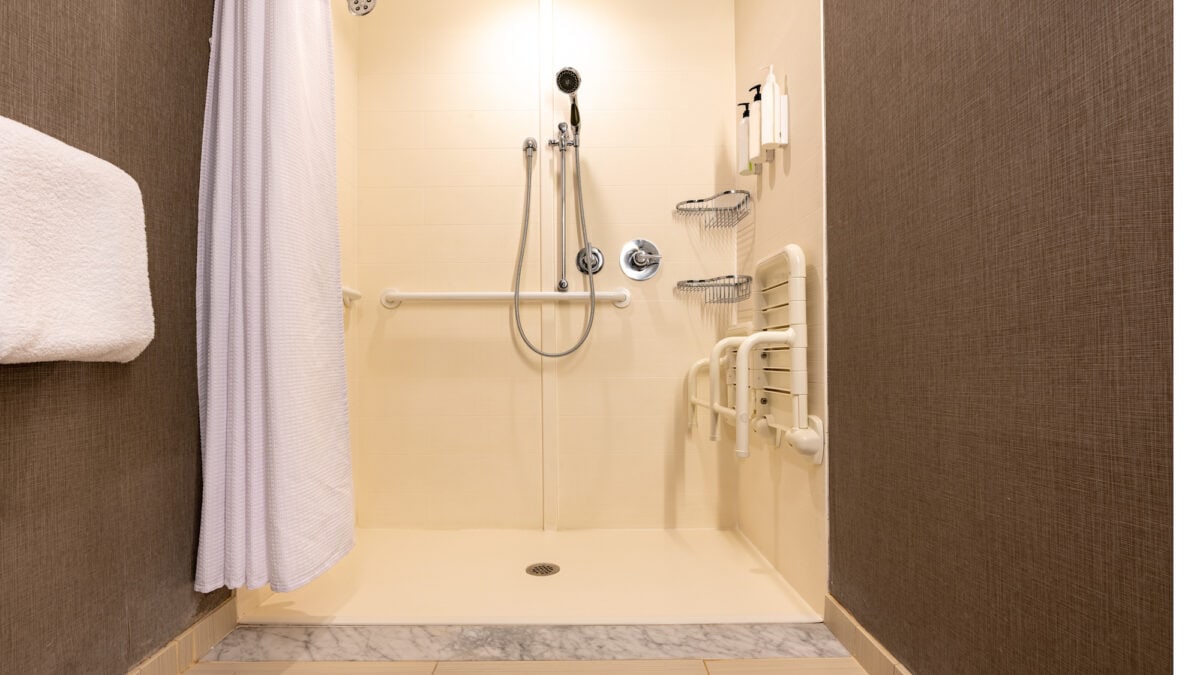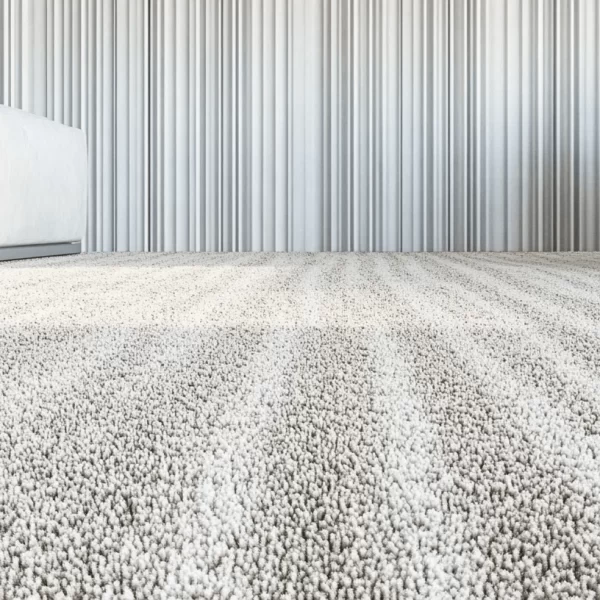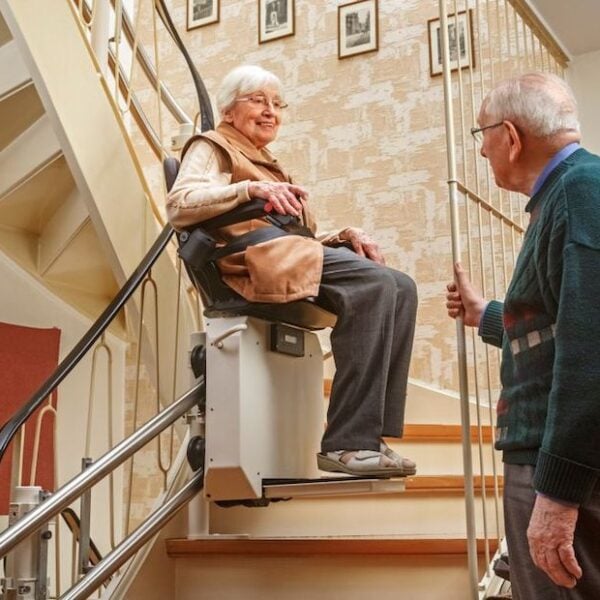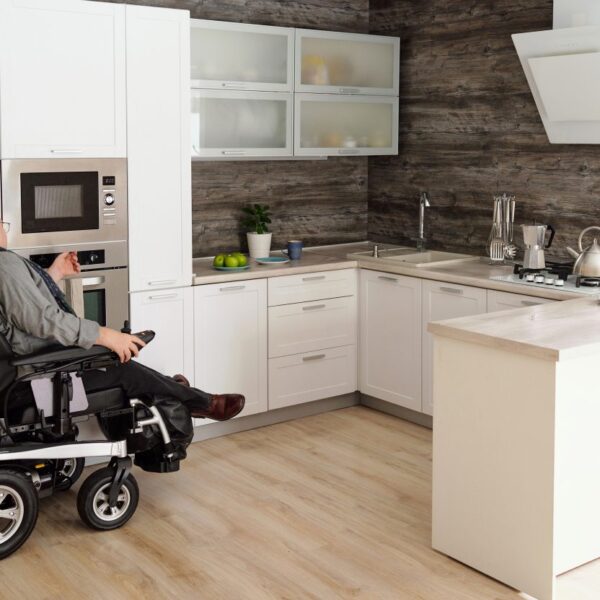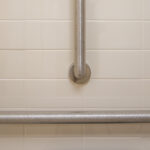
How to Install Grab Bars for Elderly Care
June 11, 2024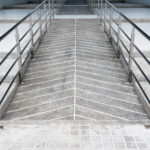
Enhancing Accessibility: Wheelchair Ramp Installation
August 15, 2024Stepping through a bathroom door should be an experience of comfort and accessibility, not a challenge.
In Madison Heights, MI, residents are elevating their personal sanctuaries with upgrades like walk-in tubs with hydro massage features, transforming a simple bath into a spa-like haven within the dimensions of their own walls.
Whether it’s ensuring safety with strategically placed grab bars or tailoring the space to meet the specific needs tied to a person’s login details or zip- code, there’s a surge in creating bathrooms that cater to all abilities.
Keep reading for a detailed explanation of how these enhancements make daily routines safer and more luxurious for people in our community.
Installing Walk-in Tubs for Easy Access
Embracing the transformation of a standard bathroom into a sanctuary often begins with the installation of a walk-in tub.
As I survey the plentiful options, finding the right combination of dimensions and innovative features to tailor to individual requisites emerges as a priority.
Advocates of hydrotherapy will appreciate the ripple of relief that comes from tubs equipped with therapeutic jets.
When considering budget constraints, cost becomes a central consideration, especially when weighing the merits of a complete tub-to-shower conversion near me.
Naturally, ensuring the new addition fits seamlessly beneath the window and promotes enduring safety and ease of use is where professional installation becomes invaluable.
Choose the Perfect Size and Features for Your Needs
When selecting a walk-in tub, universal design principles advise on features that accommodate everyone, regardless of mobility limitations. I assess different models, focusing on the ease of entry a door can provide and searching for Safestep tubs that balance comfort and accessibility. The perfect tub for a person might mean the inclusion of a handrail in just the right place or the assurance that the advertising promises of safety and luxury hold up under scrutiny:
- Assessing tub dimensions ensures a snug yet accessible fit within the bathroom space.
- Evaluating door designs for their ease of operation and watertight seals.
- Comparing the placement and usability of handrails for safety and confidence while bathing.
- Investigating the range of therapeutic features offered by Safestep tubs and others alike.
- Ensuring commitments made through advertising reflect the actual user experience post-installation.
Armed with this list, I venture further into selecting a tub that aligns with a universal design approach, promoting independence and safety for all users.
Professional Installation to Ensure Safety and Durability
For residents in Madison Heights embarking on the journey to enhance their bathroom’s utility and comfort, enlisting a pro to position your senior bathtub in that perfect spot, perhaps next to the kitchen for easy back-and-forth or beneath a window to bathe in natural light, is a wise move. Crucially, a chair within the confines of a spa-like enclosure, surrounded by the soothing embrace of water jets, is no longer merely a vision but an attainable feature when installed by someone with the know-how to precisely navigate the complex landscape of plumbing and fixtures. The result – a lasting upgrade that marries safety with indulgence.
Adding Grab Bars for Improved Bathroom Safety
In my conversations with customers in Madison Heights who long for safer, more accessible bathrooms, discussions inevitably turn toward the strategic augmentation of privacy spaces with grab bars.
Transforming potentially hazardous areas into zones of assurance doesn’t have to disrupt the aesthetics or comfort of your space.
Consider the delicate balance of placing these safety features near handicapped bathtubs where support is often most critical, or envision them framing a hot tub that offers relaxation but poses a barrier to entry and exit.
Slip-resistant materials, possibly a rugged composite material, should be considered, as they stand as sentinels against slips and falls.
These materials and styles merge seamlessly with existing décor, like the deft incorporation of grab bars that don’t clash with the plush feel of a bathroom carpet.
My hands-on approach ensures that every installation enhances safety and complements my client’s personal tastes and functional needs.
Identifying Strategic Placement Around the Bathroom
In my professional endeavors throughout Madison Heights, the art of making bathrooms safe and accessible for all cannot be overstated. It’s about pinpointing the strategic spots where a wheelchair-accessible bathtub would benefit from a grab bar—for instance, near the drain or at an easy reach from the tub’s ledge. Carefully considering the movements of those who will use tubs for disabled folks ensures that each placement transforms the space into an enclave of accessibility, resonating with the fundamental values of inclusion that are so profoundly respected in Madison Heights.
Opting for Slip-Resistant Materials and Styles
Deciding to select materials for grab bars wasn’t just about ensuring they’re firm and reliable; it also meant considering the aftermath of any potential slips, where the grip and texture might prevent an injury. In these thoughtful upgrades, I chose to forego the typical plastic options. Instead, I recommended hardy, slip-resistant alternatives that could easily withstand the force of water from the pump in the walk-in tub, all while fitting into the broader payment plans and aesthetic choices of my clients in Madison Heights.
Upgrading to a Wheelchair-Accessible Sink
Transitioning toward a barrier-free washroom necessitates thoughtfully chosen fixtures, like a sink that marries functionality with the freedom of movement.
My search in Madison Heights for such a sink led me to options with the proper height and clearance to accommodate a wheelchair, ensuring every user can easily approach the basin.
I gaze towards durability, style, and practical elements such as heat retention for more comforting usage.
Equally integral are the faucets; I steer towards ones with lever handles or the latest touchless technology, which assures effortless operation for all. This combines modern convenience with traditional comforts, such as resting one’s arms on a cushioned surface while using the sink.
Additionally, I always check the fidelity of the warranty before I commit to it and review the privacy policy to ensure any data from touchless tech is handled respectfully.
These features are standard in California, where design and tech converge, but I am bringing these options home to Madison Heights—tailoring each installation to my clients’ precise needs and preferences.
Select a Sink With Appropriate Height and Clearance
My focus in Madison Heights shifts to the crucial height and clearance needed for a sink that can accommodate every user comfortably, particularly those who rely on wheelchairs for mobility. For a client recently interested in converting their step-in bathtub to a more accessible space, I highlighted how a sink with adjustable features could provide the same level of customization without the tub-to-shower conversion cost. It’s like adding an ozone layer of comfort; the sink area becomes a breeze to navigate, resembling the ease of operating a swing door or the smooth glide of a shopping cart, ensuring each individual can maintain independence in their daily routines.
Consider Faucets With Lever Handles or Touchless Technology
I professionally guide clients through the nuances of selecting faucets for their newly accessible spaces. Often, I nudge them towards lever handles for ease of use, reminding them of the simplicity akin to pushing a cart through a retail store. For those who’ve opted for the sleek look and practicality of walk-in bathtubs or are considering tub-to-shower conversions, I suggest touchless technology, underscoring its seamless operation—ideal for wheelchair-accessible tubs and promoting an effortless bathroom experience.
Incorporating Non-Slip Flooring Options
In the quest to elevate the safety and usability of bathrooms in Madison Heights, attention often turns to the ground beneath our feet.
While weighing the options for non-slip flooring, I compare the merits of textured tiles and resilient vinyl.
Textured tiles offer a tactile advantage that ensures a firm foothold, whereas vinyl can provide a softer surface, lessening the impact should someone stumble.
Steeling our selection with stainless steel enhancements becomes a topic of discussion, as these elements can complement the textures of tile or vinyl, contributing to an overall aesthetic as durable as it is pleasing to the eye.
My email communication with suppliers brimming with the American National Standards Institute details ensures the products I suggest to my clients meet the highest standards.
Beyond material choice, partnering with a seasoned contractor skilled in proper installation practices is non-negotiable. This will ensure that the new flooring remains a stalwart ally against slips and falls for years to come.
Compare Materials Like Textured Tiles or Vinyl
In my dealings across Madison Heights, selecting textured tiles and vinyl for floor upgrades in an accessible bathroom often boils down to individual needs and overall aesthetics. Textured tiles provide excellent grip and are vital in areas where lighting is not optimal, enhancing visibility and reducing the risk of falls. At the same time, a high-quality vinyl floor can impart a Monaco-inspired elegance, complete with the durable gel coat finish one expects from upscale designs. Similarly, vinyl offers more forgiveness regarding plumbing mishaps, easily repelling water without compromising the safe tread critical in any accessible space.
Ensure Proper Installation With an Experienced Contractor
Securing the services of an experienced contractor is vital to meeting the international building code and ADA compliance requirements for installing a handicap-accessible shower and tub. With every inch of the bathroom floor requiring precise application and sealing, these experts ensure that all safety guidelines are strictly followed, averting any future complications that might arise from improper installation.
Enhancing Lighting for Better Visibility
In Madison Heights, the conversation about accessible bathroom design doesn’t stop at installing a handicapped bathtub or an ergonomic sink.
It’s about weaving privacy and therapy into daily life for individuals with mobility challenges.
Navigating the bathroom at night can be risky, so I advocate for incorporating bright, energy-efficient LED lighting.
These bathe the room in clear light and adhere to a thoughtful energy policy.
Furthermore, integrating motion sensors or night lights adds a layer of safety, providing guidance and assurance when the leading lights are off.
This approach ensures that accessibility is a 24-hour priority, offering a seamless fusion of safety and convenience.
Install Bright, Energy-Efficient LEDs Where Needed
As I delve into bathroom modifications for my clients in Madison Heights, I place a high importance on visibility, especially around handicap-accessible tubs. Opting for bright, energy-efficient LED lighting not only aids individuals with mobility challenges but also offers a practical option for homeowners looking to cut energy bills. Handy tip: Sometimes, a coupon can make upgrading to LEDs more affordable, and most retailers will gladly accept a credit card, making the switch a hassle-free investment in safety and efficiency.
Add Motion Sensors or Night Lights for Safety at Night
Nighttime maneuvers in a bathroom equipped for wheelchair access demand cautious consideration. Integrating motion sensors that activate lights as one approaches the wheelchair-accessible tub instills confidence and uproots potential hazards concealed in shadows. As I oversee the construction, a password-protected system may also be installed to personalize settings for individuals who prefer a customized lighting scheme that anticipates their unique needs.
- Assessment of bathroom layout to identify critical locations for sensor placement.
- Programming of a password-protected lighting system for personalized use.
- Inspection of the installed sensors to certify their responsiveness and effectiveness.
Expanding Doorways for Barrier-Free Entry
During my hands-on renovations in Madison Heights, I’ve learned that the gateway to a truly accessible bathroom begins with widening doorways. Whether a client is considering a step-in tub or a handicap tub shower, maneuvering mobility aides through traditional doorways can present a significant challenge. Therefore, expanding these entryways significantly impacts the ease of access and overall functionality of the space.
Introducing modifications like stair lifts in homes has been rewarding, but there’s something particularly satisfying about crafting spaces that welcome all. As part of that, bringing an accessible bathtub into the equation has often led me to reevaluate and redesign door widths. This ensures smooth entry and exit for all users, enhancing the independence and dignity of those who benefit from the modifications.
While structural alterations have practical benefits, I also infuse elements of tranquility into my accessible designs with touches like aromatherapy systems. Expanded doorways not only facilitate the inclusion of larger fixtures like handicap tub showers but also create an open, serene atmosphere that complements the therapeutic benefits of essential oils, elevating the bathing experience to a spa-like retreat.
In Madison Heights, bathrooms are being upgraded to be accessible, which impacts not just safety but also independence. This allows individuals with mobility challenges to navigate their spaces with confidence.
By installing features like walk-in tubs with therapeutic jets, grab bars in strategic locations and non-slip flooring; homes can transform into havens of comfort and security.
Enhancements such as wheelchair-accessible sinks and energy-efficient LED lighting further meld convenience with modern living.
Expanding doorways completes the picture, ensuring that every element of an accessible bathroom caters to ease of access and the dignity of its users.

Introducing Jeff Cates, the visionary Founder and Owner of CAPS Remodeling. After experiencing a profound personal event involving his son in 2007, Jeff was inspired to serve a higher purpose: to create safer, more comfortable, and independent living conditions for the elderly and disabled by modifying their current homes. Jeff’s deep-seated religious beliefs form the moral compass that steers CAPS daily operations. Apart from his unwavering dedication to his work, Jeff finds joy in boating and cherishing moments with his family.

